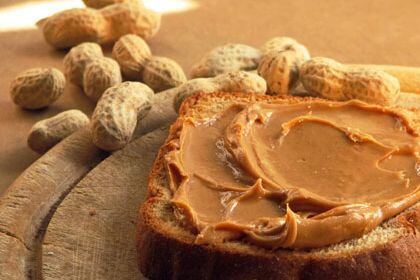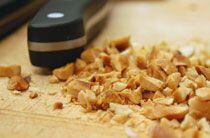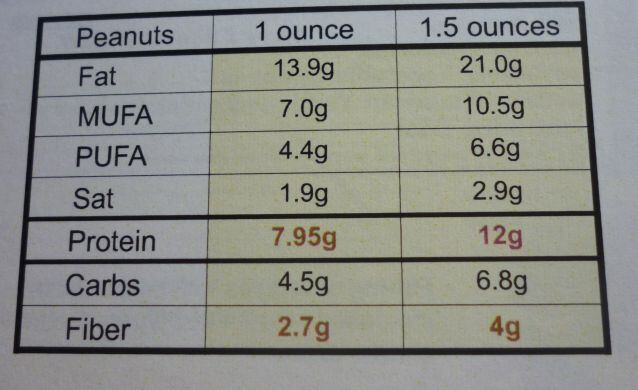Yet if any whole food really deserves the much-abused ‘super food’ moniker, then it’s peanuts - including the ones you’ll find in the salty snacks aisle by the soda and chips - delegates were told at a three-day event in Napa Valley hosted by the Peanut Institute last weekend.
Salted peanuts are not actually very salty …
The most nutrient-dense of all nuts (technically they’re legumes, but more of that later*), peanuts are also the most misunderstood, said successive speakers.
Contrary to popular belief, roasted salted peanuts contain just 119mg of sodium per 1oz (28g) serving, no trans-fats and just 1.9g of saturated fat (plus a stack of healthy mono- and polyunsaturated fat), qualifying them for the American Heart Association heart-healthy certification scheme, pointed out Peanut Institute program director Pat Kearney.
They also comfortably meet the FDA’s criteria for low sodium foods (nuts with <140mg sodium/serving), she said.
“People are surprised to learn that salted peanuts are not actually very salty.”
The reason they seem saltier than they are is because salt crystals cling to the surface of the peanuts and come into immediate contact with salt receptors on the tongue, delivering a much more intense hit than were the salt inside the peanut instead of topically applied, said Kearney.
“Weight for weight, salted peanuts contain less salt than most breads or breakfast cereals, muffins, tortilla chips, waffles and biscuits, and as some of the salt also rubs off on your hands or is left in the pack, you also typically eat less than the amount stated on the label.”
People that eat more nuts have a lower risk of cardiovascular disease and diabetes and a lower BMI

As for weight management, while peanuts pack a sizeable caloric punch, epidemiological data consistently shows that high intakes of peanuts (and nuts in general) are associated with lower incidence of obesity, while intervention trials also show that peanuts elicit strong dietary compensation (if you eat peanuts in the morning, you’ll spontaneously reduce your food intake later in the day), she said.
Meanwhile, we don’t absorb all of the energy in whole nuts, which means we may be overstating snack peanuts’ calorie content, while there is emerging evidence that regular consumption of peanuts and other nuts raises our resting metabolic rate, effectively neutralizing a further percentage of the energy obtained from nuts, she said.
As peanuts are low GI (glycemic index) foods, they can also be used to mitigate the effects of a high-carb breakfast on blood glucose, helping prevent spikes in blood sugar that will persist through lunch as well, she added.
A serving of peanuts also provides 2.7g of fiber and more protein per serving (8g/oz) than any other nut.
Vasodilator: Peanuts contain the highest levels of arginine of any whole food
From a cardiovascular perspective, meanwhile, peanuts are a veritable nutritional powerhouse, packed with cholesterol-busting phytosterols, monounsaturated fat, potassium and magnesium; vitamin E, niacin; folic acid; and the same kinds of phytonutrients found in berries, green tea and red wine (resveratrol, phenolic acids and flavonoids).
Less well-known is the fact that they also contain the highest levels of the amino acid arginine of any whole food (arginine is a precursor to nitric oxide, which helps expand blood vessels and decrease blood pressure); something that is getting sports nutritionists almost as excited as cardiologists, said Kearney.

Delegates were also given a presentation from Professor Tim Sanders about recent research he conducted with Amanda Stephens at the University of North Carolina showing that peanuts, peanut oil and fat-free peanut flour all significantly lowered LDL cholesterol in hamsters.
Meanwhile, hamsters on the peanut diets also showed lower levels of several pro-inflammatory biomarkers including Endothelin-1 (ET-1); higher levels of glutathione; lower levels of oxidative stress; and lower levels of kynurenine, elevated levels of which are linked to several diseases arising from chronic inflammation including Alzheimer’s, he said.
That’s huge, that’s a quantum leap - from ‘eat sparingly’ to ‘eat every day’
Two decades ago (when all fat was the enemy) peanuts sat at the top of USDA’s nutritional pyramid along with candy, said Kearney.
“The advice was to eat nuts sparingly. I can still remember a conversation with Vegetarian Times when they were reluctant to promote peanuts because they were too high in fat.”
Today, as we are told that it’s the type, not the quantity, of fat that really counts, we’re learning that eating a handful of nuts such as peanuts every day might be one of the easiest ways to improve our health, she added, although there is still some PR work to do to help consumers catch up.
“That’s huge, that’s a quantum leap - from ‘eat sparingly’ to ‘eat every day’.”
*Check out FoodNavigator-USA over the next few days for more coverage of the May 4-6 Peanut Institute event, where delegates learned that...
- Everything we think we know about energy density may be wrong...
- More Americans are skipping lunch than breakfast...
- Our perception of how satiating a food will be actually affects our physiological response to it...

